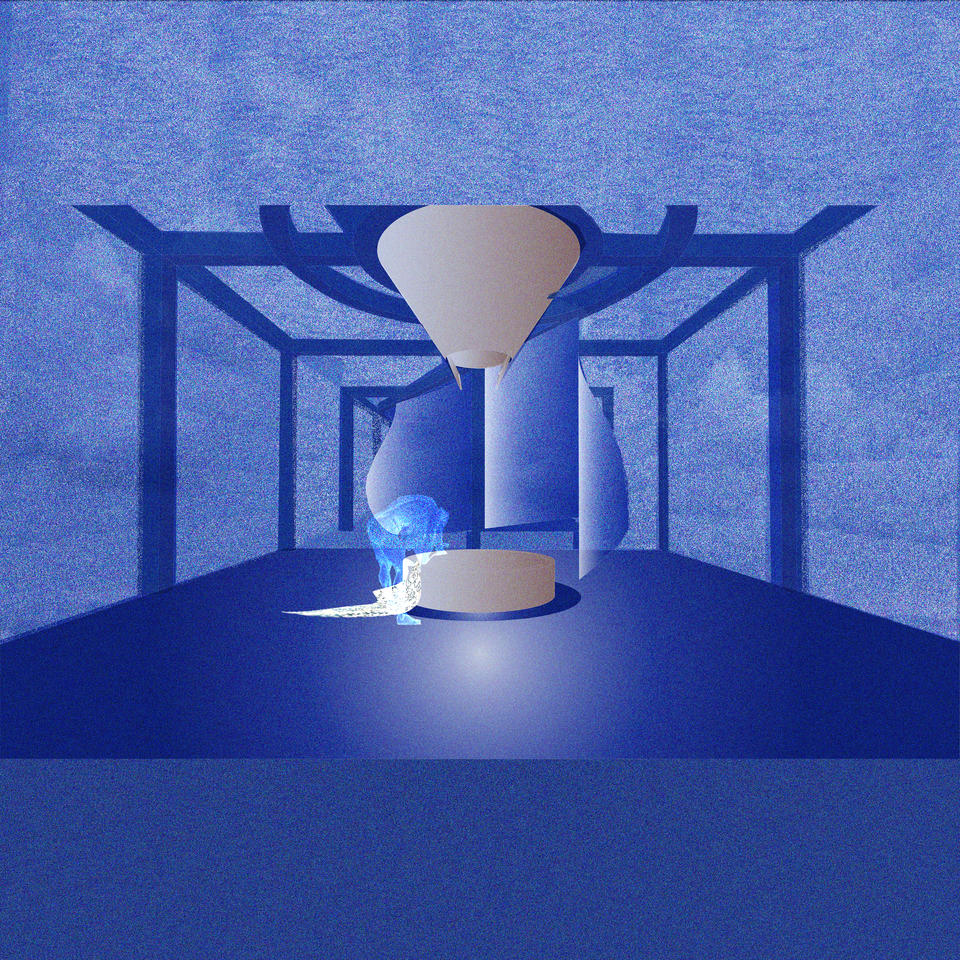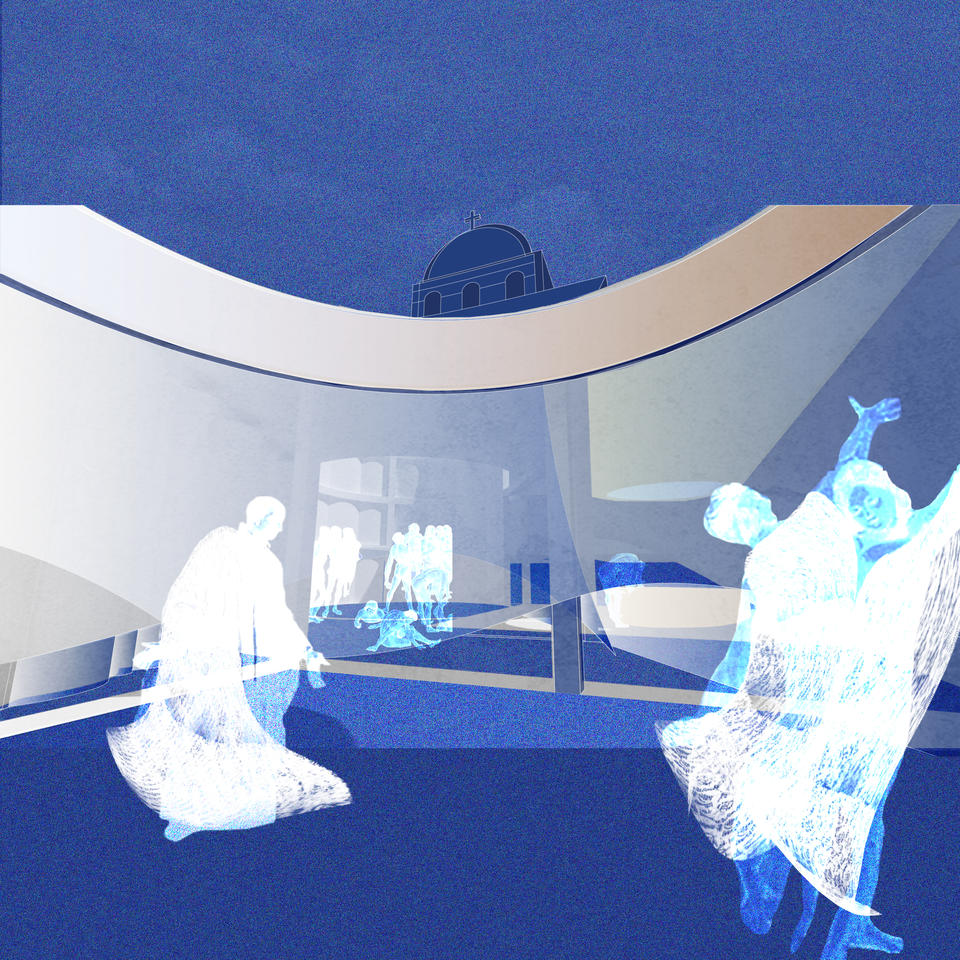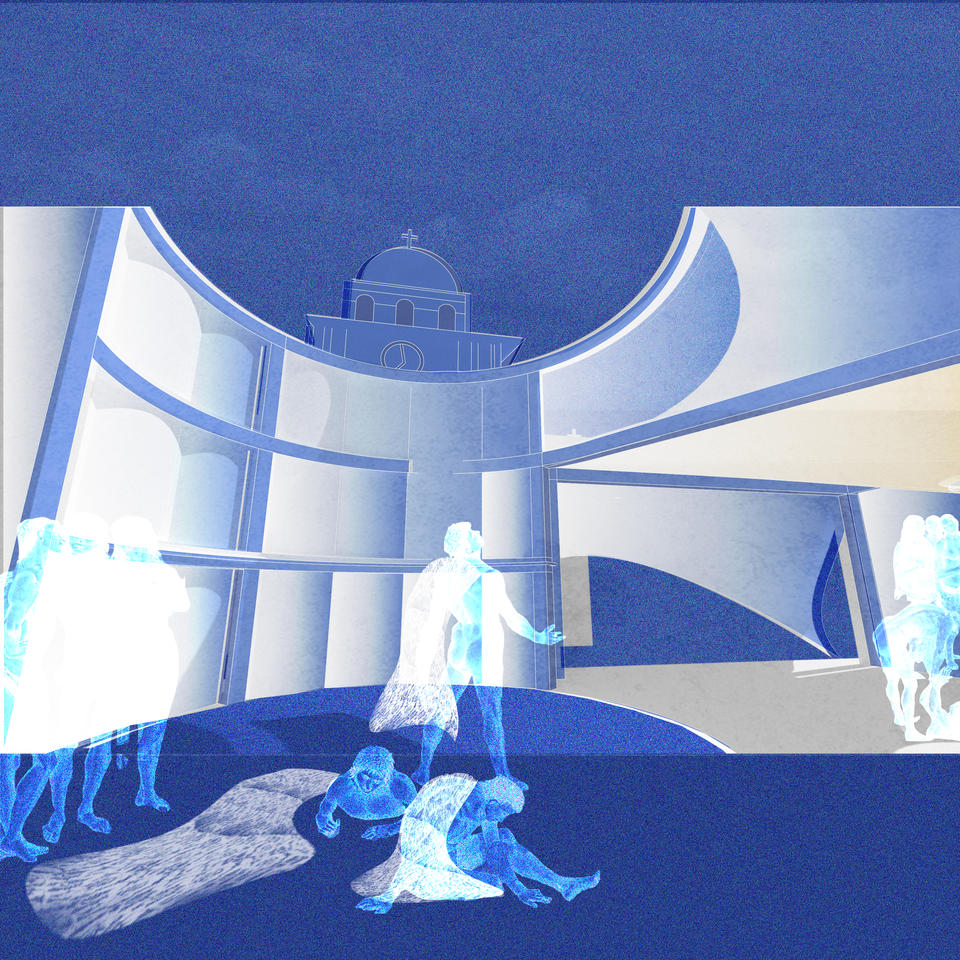Image
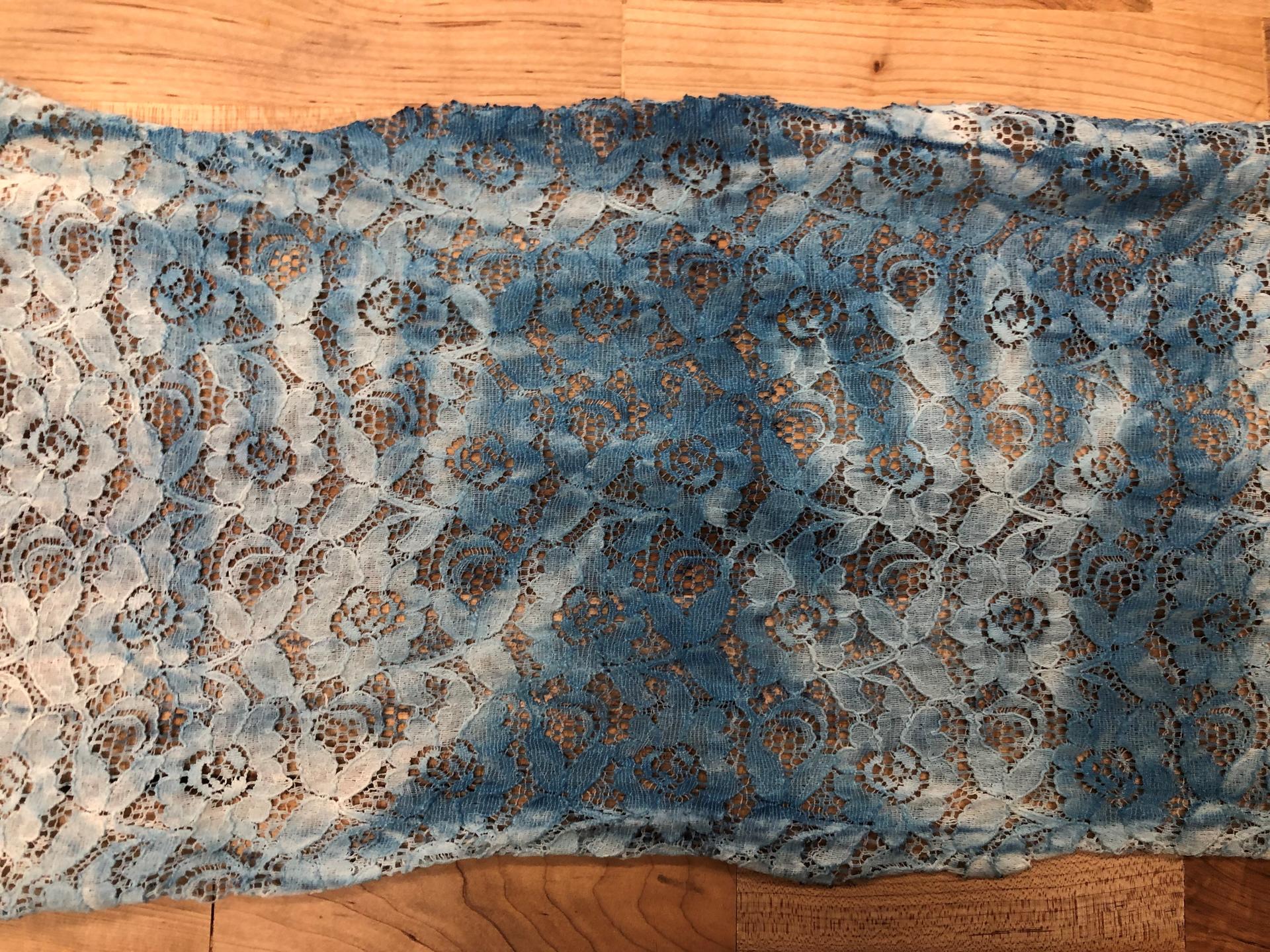
David Dávila
Sacred Pleasures: A Patronage Festival of the Erotic and Play
Sacred Pleasures emphasizes human connection and experience. The transcalar use of the erotic and play in spatial design can redefine the current cultural value of production and capital. The proposal addresses three scales of these socioeconomic and spatial conditions: system, architectural, and human scale. The erotic is used as power and resistance. Play is used as a method to achieve agency and to mediate human connection.
The thesis resists from within the context of Puerto Rico, an island product of colonization by two entities, Spain and the United States of America. It addresses the relationship between Puerto Rico and the propagation of the imposed urban condition of plazas de recreo, or public plaza. The ritual is anchored by the material culture of two textile techniques, mundillo lace making and the cyanotype process. The patronage festival subverts the relationship of the colonist origins of plazas de recreo and Catholicism through the power of erotic, play, and procession. Sacred Pleasures displays how colonized bodies reclaim material, space, and autonomy.
Image
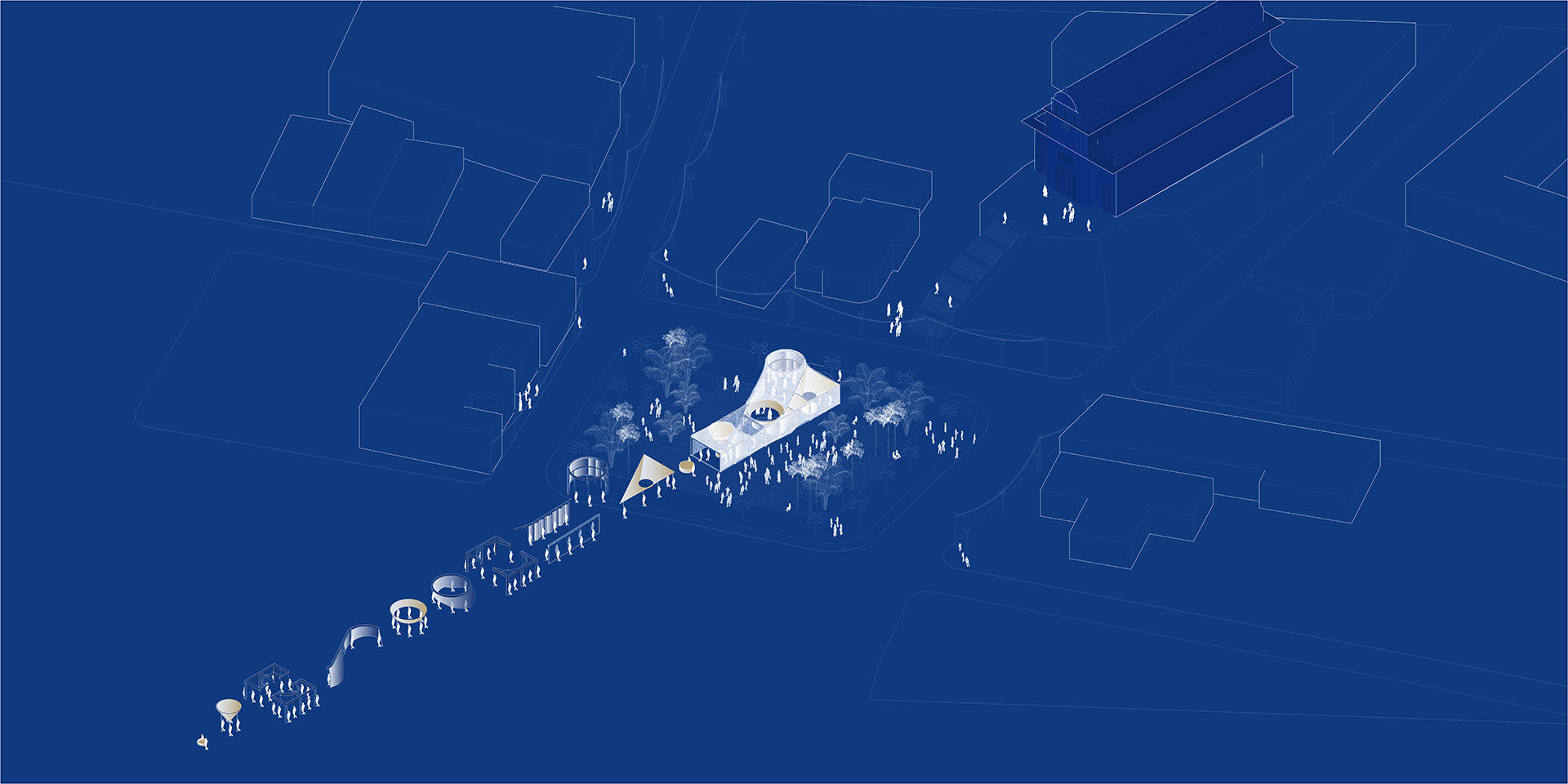
Twenty by sixty foot long space wrapped in blue felt and lace in the middle of public plaza.
Digital
24"x48"
2022
Sacred Pleasures is a patronage festival based on empowering the use of the erotic and play in spatial design. It anchors itself to existing patronage festival schedules and is meant to go year round to all original public plazas of each town in Puerto Rico.
Image
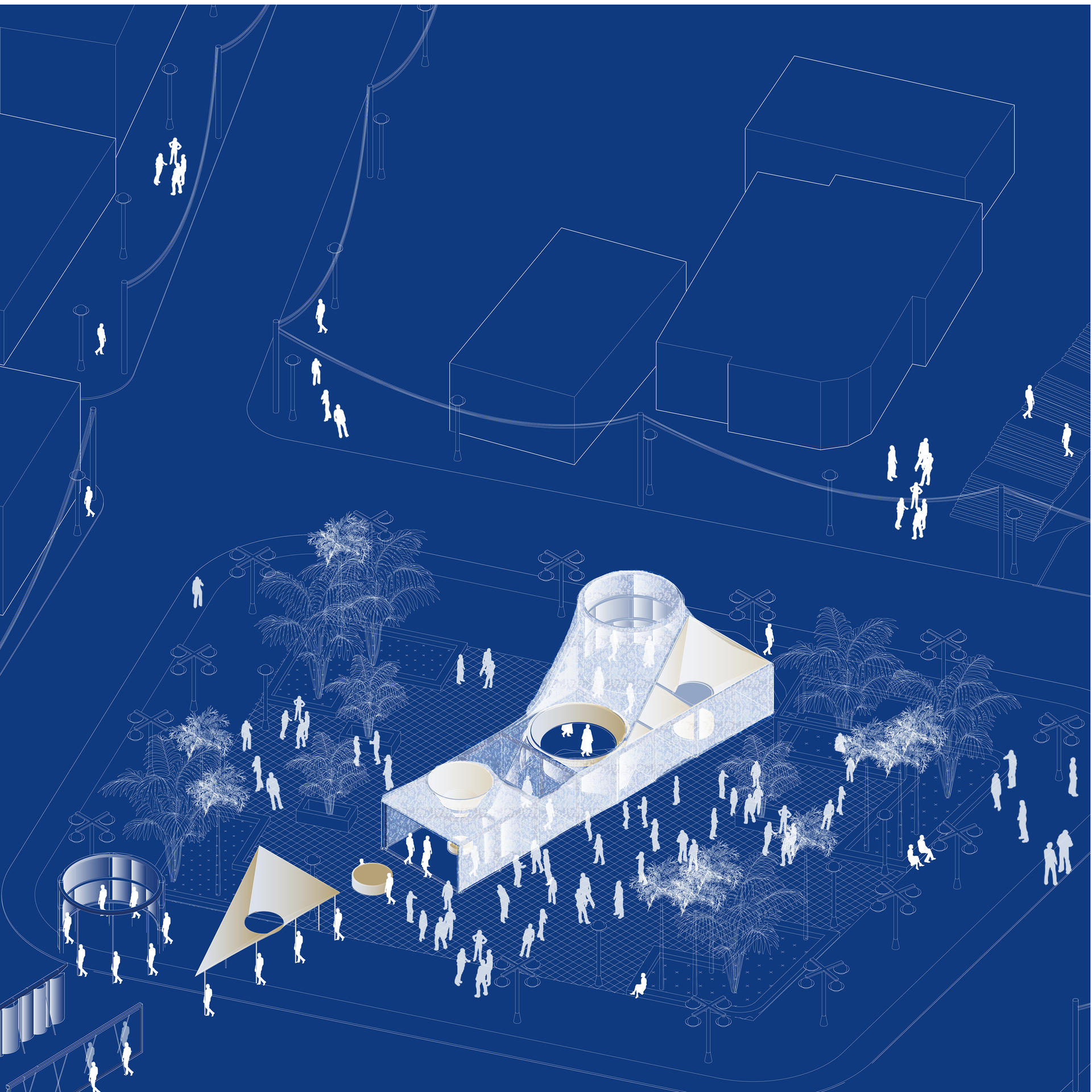
Sacred Pleasure - Architectural Object
Digital
24"x24"
2022
The architectural object is meant to create a ritual tied to original production of local mundillo lace from the town of Moca, and cyanotype dyeing processes. It challenges how architectural space can also become artifact(s), by having the ability to be disassembled and used as part of the festival procession which travels around the island.
Image
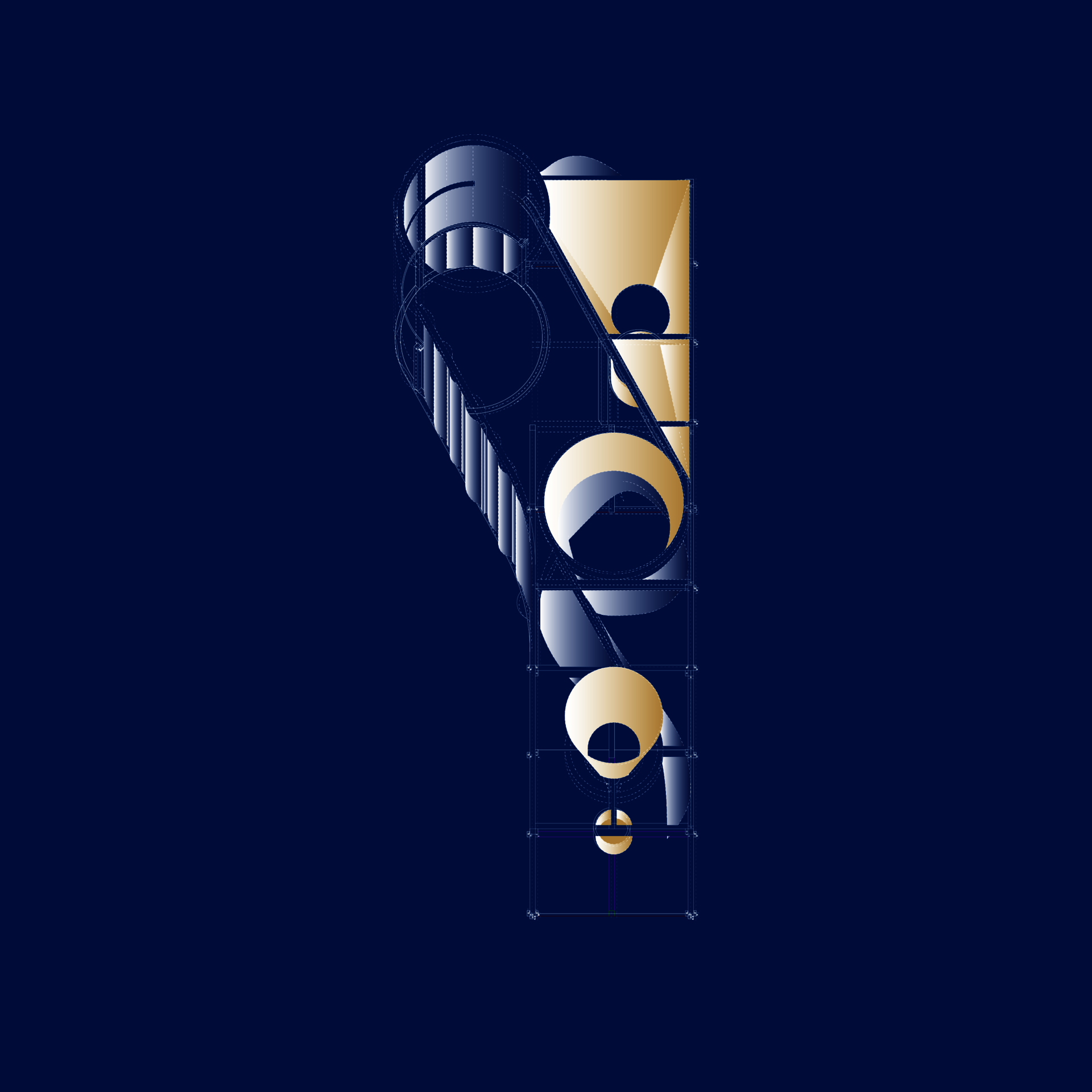
Sacred Pleasures: Oblique Elevation
Digital
24"x24"
2022
The architectural object is divided into three main scenes. Each scene based on processing mundillo lace with cyanotype dye. Each space interacts with golden artifacts that contrast the cyanotype blue that is being accumulated around the spaces. They are the connection between water, light, and human connection.
Image

Cyanotype Lace Sleeve Toile
Cyanotype-dyed lace
12" x 24"
2022
The ritual within the architectural object is meant to connect colonized bodies of the general public. To reclaim the material and space originally imposed by Spain. Through the architectural spaces one is meant to follow three main steps which are the following: collect and dye the lace, wear the dried lace and be exposed to the sun, and finally remove the lace wearables collectively or individually. The cyanotype dye allows for the ritual to not only be recorded on the floor of the scenes, but also the interaction between bodies and the lace wearables. Hands, arms, legs, faces, chests, begin to record silhouettes onto the material and is used as documentation of a collective act of being present.
Image

Hand Remnants
Cyanotype-dyed Lace
12"x24"
2022
Remnants of handprints on lace due to cyanotype.
- Architecture
- Ceramics
- Design Engineering
- Digital + Media
- Furniture Design
- Global Arts and Cultures
- Glass
- Graphic Design
- Industrial Design
- Interior Architecture
- Jewelry + Metalsmithing
- Landscape Architecture
- Nature-Culture-Sustainability Studies
- Painting
- Photography
- Printmaking
- Sculpture
- TLAD
- Textiles
